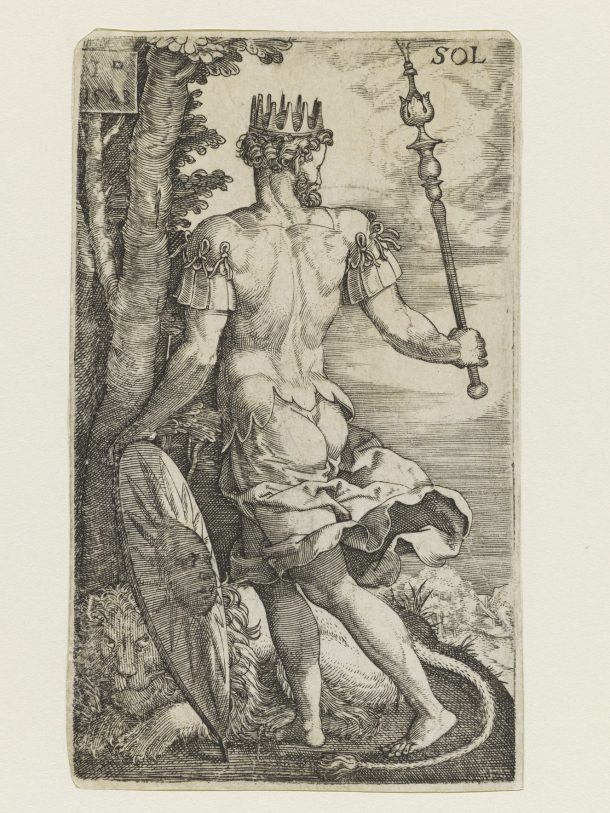
As the solar calendar is at the forefront of our minds, this handsome personification of the Sun seemed a fitting start to the New Year. The Sun is closest to the Earth during the month of January which may come as a surprise to many in the Northern Hemisphere where it currently feels rather dark and cold!
It was engraved by Georg Pencz in the 1520s and is one of a suite of seven prints interpreting the five known planets besides Earth at the time, alongside the Sun and the Moon. Pencz’s exact origins are unknown but he first crops up in 1523 where he was known as one of the Nürnberg Kleinmeisters (Nuremberg Little Masters). They worked in very small formats (this print is only 8.5cm by 5cm) and were deeply influenced by the great master printmaker of the Northern Renaissance, Albrecht Dürer, also from Nuremberg.
On the celestial theme, this weekend sees two Galilean anniversaries. On 7 January 1610, Galileo Galilei made the first observations of three of Jupiter’s largest moons, Ganymede, Europa, and Callisto. He also made ground-breaking discoveries about the Sun, Moon, Venus and Saturn. Such observations on the movement of celestial bodies proved highly controversial in his lifetime as it was commonly accepted as religious doctrine that the heavens were unchanging and everything revolved around the Earth. Put on trial for heresy, he was ordered to remain under house arrest, and died on 8 January 1642.
There are a large number of works related to astronomical and astrological themes in the collection, and many Old Masters to explore in the Prints and Drawings Study Room. Please follow the link to make an appointment.



Inspirational work with a definite genre